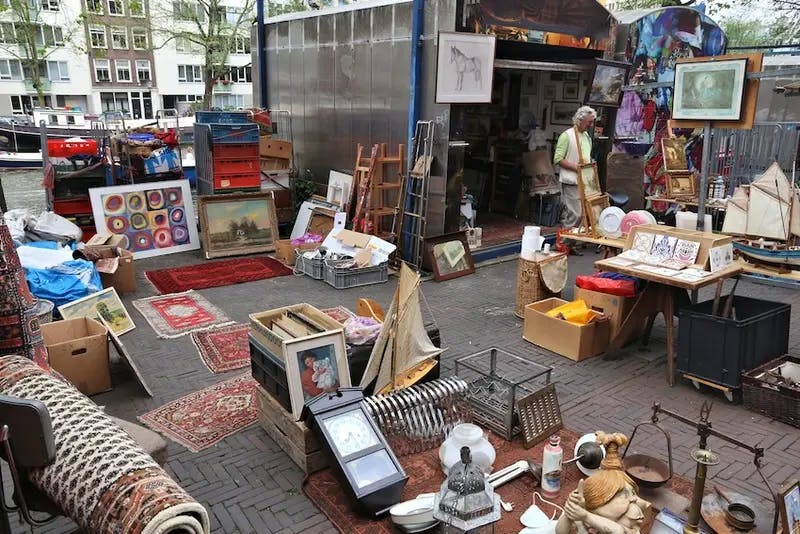The Art of Thrift Shopping
byFrugal and Simple
Fri Feb 09 2024

Do you ever feel like you can’t buy new clothes while trying to stay on budget? It is possible to shop for clothes you love without pulling from other areas of the budget. If you love having new items in your closet to add to your rotation, thrift shopping can be a great way to shop without going over budget. Buying second-hand items from thrift stores, garage sales, or Facebook marketplace allows you to stretch your budget while expanding your closet.
Thrift shopping takes some skill to sift through the piles of clothing and find the hidden gems. It is thrilling to have one-of-a-kind pieces that are just right for your style. This article will explore the art of thrift shopping and how it can benefit your style and budget.
The Appeal of Thrift Shopping
Thrift shopping offers a treasure trove of benefits, both financial and beyond. It’s an eco-friendly shopping alternative, reducing waste and encouraging recycling.
For the budget-conscious, it provides a means to stretch dollars further without compromising on quality. Additionally, thrift stores often support charitable causes, meaning your purchases can help make a difference in your community.
The Financial Benefits of Thrift Shopping
Guard your budget and feed your need to shop by shopping for secondhand items. You will be surprised at how exciting it is to stumble upon timeless closet staples. Here are some monetary benefits of thrift shopping:
1. Expand Your Budget
The most obvious benefit of thrift shopping is its cost-effectiveness. Items in thrift stores are typically priced much lower than their original retail value, allowing you to stretch your budget. This is particularly advantageous for essential items like clothing, furniture, and household goods.
2. Reduce Depreciation Loss
When you buy new items, they often depreciate in value the moment you take them home. However, second-hand items have already undergone this initial depreciation. This means that if you decide to resell them, you’re more likely to get a return closer to what you originally paid.
3. Investment Potential
Some thrift shop finds can increase in value over time. Vintage clothing, first-edition books, unique furniture, or collectibles can become valuable assets. With a keen eye, thrift shopping can turn into a profitable hobby.
Tips for Successful Thrift Shopping
Thrift shopping doesn’t mean buying raggedy clothes that you dread wearing each day. You can find high-quality, durable clothing at a fraction of the cost when you buy secondhand. Take some of these tips to make your thrift shopping more successful:
1. Have a Plan
Go into a thrift store with a clear idea of what you need. This focus helps to avoid unnecessary purchases and ensures that your shopping aligns with your financial goals.
2. Know When to Shop
Timing can be everything in thrift shopping. Learn when new stock arrives and when stores offer sales or discounts. Shopping early in the day can also help you find the best items before they’re gone.
3. Inspect Items Carefully
Always inspect items for quality. Check for any damage, wear, or missing parts. For clothing, look for durable fabrics and well-made items that will last. Often, cotton or wool will last longer than synthetic fabrics.
4. Learn to Negotiate
In some thrift stores, particularly at garage sales or flea markets, prices can be negotiable. Don’t be afraid to haggle respectfully, especially if buying multiple items.
5. Be Patient
Finding great items at thrift stores can sometimes be a hit or miss. Patience and frequent visits can increase your chances of finding real gems.
The Environmental Impact
Thrift shopping is not just a financially savvy choice; it’s also an environmentally responsible one. By purchasing second-hand items, you reduce waste and the carbon footprint associated with manufacturing new goods. It’s a small but significant way to support environmental sustainability.
Make Thrift Shopping a Part of Your Financial Plan
Incorporating thrift shopping into your regular shopping habits can have a noticeable impact on your finances. It allows you to maintain a lifestyle that is both financially responsible and enjoyable. Here’s how to integrate it into your financial plan:
The Art of Mindful Spending: A Frugal Approach to Shopping

1. Stick to a Thrift Shopping Budget
Set aside a portion of your monthly budget for thrift shopping. This will help you manage your spending while still enjoying the hunt for second-hand treasures.
2. Track Your Savings
Keep track of how much you save by comparing thrift store prices to retail prices. This can be motivating and help you see the tangible benefits of your thrift shopping efforts.
3. Use Savings for Financial Goals
Direct the money you save through thrift shopping towards your financial goals, whether it’s paying off debt, saving for a vacation, or investing in your future.
4. Donate and Declutter
Embrace the cycle of thrift shopping by donating items you no longer need. This not only clears space in your home but also contributes to the thrift ecosystem.
Beyond its financial benefits, thrift shopping can be a fulfilling lifestyle choice. It encourages creativity as you find unique ways to repurpose or style your second-hand finds. It also connects you with a community of like-minded individuals who appreciate the value of pre-loved items.
Make Thrift Shopping a Part of Your Lifestyle
Embrace thrift shopping to see how you can elevate your style on a dime. It is possible to look put together and trendy through secondhand shopping. Your keen eye can spot gems to get the deals of a lifetime, all while sticking to your budget.
By integrating thrift shopping into your financial planning, you can enjoy the thrill of the hunt, the satisfaction of a good deal, and the peace of mind that comes with making smart, environmentally friendly choices. So, the next time you consider a purchase, think about exploring your local thrift store – you never know what hidden gems you might uncover.
